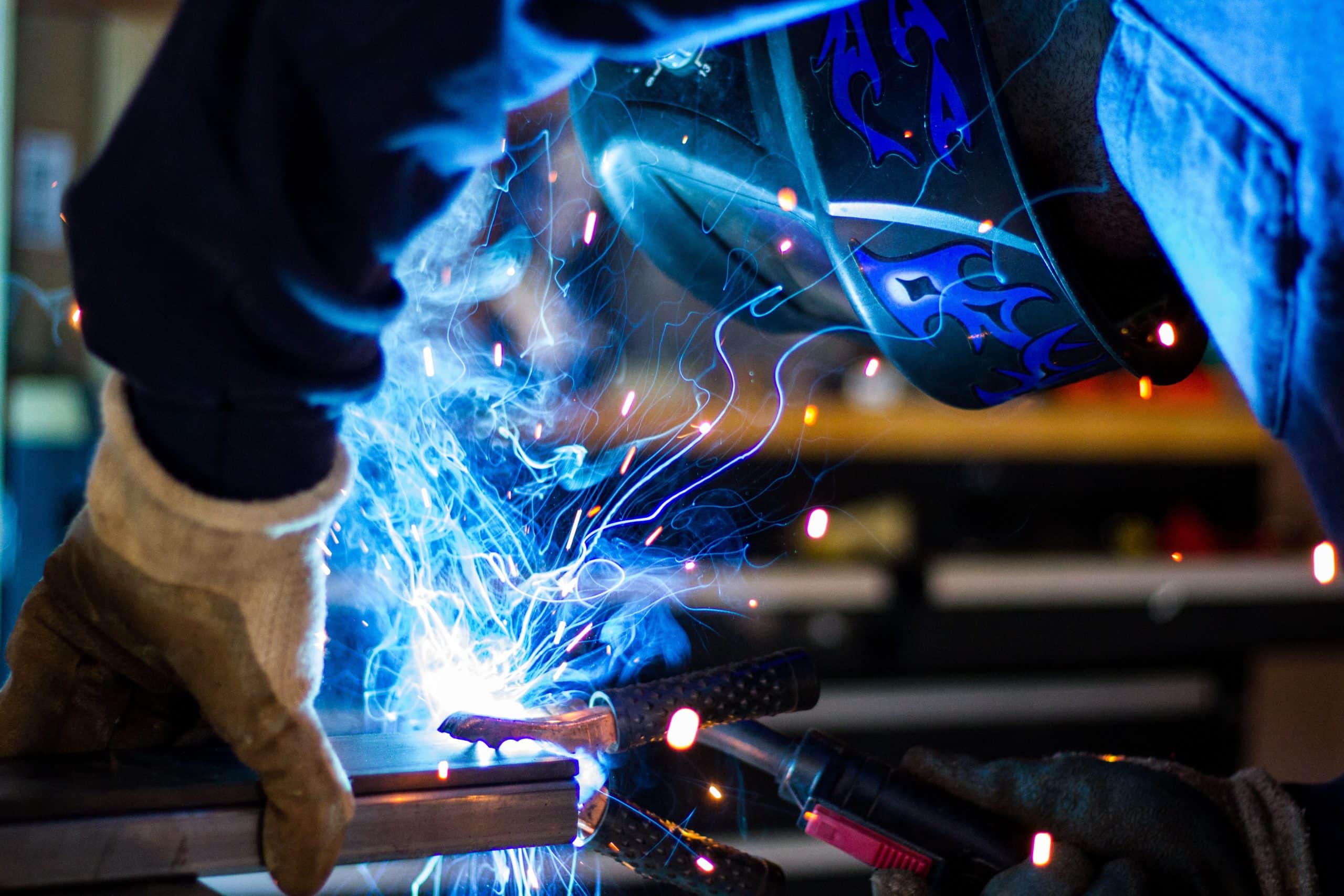OPINION. Talking about « reindustrializing » and « relocating » is often akin to wishful thinking and is fantasy-like i.e. like going back to a previous status quo. Is it even possible? And if so, is it something we really want to do? By Alain Conrard, CEO of the Prodware Group and President of the Commission on Digital Strategies of the METI (*).
At the end of March 2021, certain images were seen worldwide: those of a pipe that had suddenly been closed off by a valve depicted in a plumbing installation diagram. Except that the pipe in question was the Suez Canal – one of the world’s busiest trade routes – and the valve was a 400-meter long, 220 000-ton container ship that was adrift: that ship was the Ever-Given. The satellite images were striking: they clearly exposed the frailty of globalization. We suddenly realized, in total awe, that 12% of the world’s maritime trade could be disrupted by a closed-off valve. Like a giant clot blocking an essential international trade artery, the mammoth ship, stranded, put the entire distribution of goods circuit at major risk of thrombosis. These times of pandemic also made clear that the economic system was also prone to serious illness; pandemic and shortage could go hand in hand.
The Covid pandemic has brought to the surface certain weaknesses and shortcomings of industrial models related to globalization. The system of dependence on distant suppliers in complex manufacturing and transport chains leads to the loss of control and competitiveness, social dumping, and the sometimes, irreparable destruction of the local industrial landscape.
In order to break away from this dependency overload, or to find alternative solutions, or attempt to balance out a business model, we often hear a lot of talk around the concepts of “reindustrialization” and “relocalization.” Although they do not mean the same thing they are however closely related i.e., how do you go about reindustrializing without relocalizing? How can you rebuild an industrial landscape without setting up local factories or workshops in areas that globalization has systematically deserted? The French government has therefore decided to promote the relocation of production sites in the following five fields considered strategic which are: health, electronics, agri-food, telecoms and industrial inputs.
« RE ?» A New Kind of Mind Mapping
Everything revolves around the meaning of the “RE” prefix in both words. The definition of the prefix suggests “a return to the past”, or the identical repetition of an action that allows us to go over the same points. Talking about « reindustrializing » and « relocating » is often akin to wishful thinking and is fantasy-like i.e. like going back to a previous status quo. But is this even possible? And if so, is it something we really want to do? Can the word suggest a different meaning than that of conveying some sense of nostalgia, looking to the past, reminiscing, deception or impossibility? The identical reproduction of something that the “re” prefix seems to suggest is simply wishful thinking, both from a practical and logical standpoint: when trying to reproduce something of the past, we always introduce something different because we ourselves have changed and the world around us has evolved.
No matter how sorry we feel about this idea, we have to come to terms with the idea that the past is long gone. Reindustrializing as well as relocalizing can, in no way, be achieved by simply going back to the glory days of the past. Reindustrializing consists in fact in adopting completely new ways of industrializing: that of an “RE” that is in fact looking towards the future rather than towards the past – a redeployment of the “RE” prefix. Key in this new industrialization process are digital transformation and innovation. Relocalizing requires a new kind of local/global synergy (innovation can also address social issues, so why only consider technology alone?) How can we reconcile what seems to be incompatible i.e. profitability and local production? Here, too, we need to broaden our appreciation of the notion of “profitability”, which does not only relate to financial gain but also spreads through social, societal and ecological aspects. What comes out of all this is that this program, if it makes sense, can only mean thinking and acting differently.
And so, if Covid has clearly been an accelerator for relocalization, it also has been for change. In the midst of a multitude of disasters, there is at least one positive takeaway: the pandemic has forced us to look at our mistakes, roadblocks and dead ends. It has pushed us forward driving us to reinvent a new future, a new working and living environment. In short, it has compelled us to innovate.
The crisis is causing us to adopt a new mindset especially when it comes to the question of relocalization, when social and ecological benefits of short supply chains is now pretty obvious. The disruptive nature of the solutions that need to be developed to address this global and multi-faceted crisis is absolute. The need to reindustrialize and relocalize raises the question of borders: geographical borders, of course (where should consumer goods be manufactured?), but also political borders (how do you reinstate industrial sovereignty and create value within your own geography?) It is also about rethinking economic models and taking back control of our economy, and doing so through an innovation dynamic. This new mindset means “changing operating systems” to be able to think differently, according to a model that does not fall prey to the demands of globalization.
It even goes as far as considering to withdraw from this dominant economic model. This withdrawal is made possible in fact by the changes brought on by this global crisis and especially by the massive government support worldwide.
Government & Politics, Back in the Business Landscape: the latest in innovation
Every power in place has to have a counter-power. With that statement in mind, it is true that letting the world economy run and regulate itself was probably not a great idea in the long run. So politics is easing its way back into the game to help regulate certain economic discrepancies even though, and let’s not be naïve here, that at the end of the day it boils down to, “it’s the economy, stupid” according to James Carville, Bill Clinton’s strategist during his presidential campaign in 1992.
We are witnessing a really important boomerang effect with politics making its great comeback in the economy after 40 years of free capitalism and no state interference following the conservative revolution that brought Ronald Reagan to power in 1981 in the United States.
Up until now, we have been subjected to the macroeconomic effects of globalization, with an overwhelming prevalence of economics in decision-making that has greatly restricted the latitude of political options. Now, the ideological boundary that limits the role of the state to its strict governmental functions is collapsing. The combined effects of the environmental crisis, the social crisis and the health crisis (all three probably being different facets of the same thing) have jammed up, right in front of our eyes, this hitherto well-oiled piece of machinery. And, as if it were waking up from a long sleep, the State is called upon to intervene, urgently and with authority.
Inspired by the New Deal or the Great Society of his predecessors, Roosevelt and Johnson, the 46th American President opened the floodgates of federal funding (let’s not forget that Joe Biden’s middle name is “faucet Joe”). His administration is injecting thousands of billions of dollars into the economy, including an ambitious program of major infrastructure projects – in the term’s broadest sense: roads, widespread access to high-speed Internet, care for the elderly and the disabled, equipment and networks needed for the transition to renewable energy, etc.
In the United States, as in many countries, innovation and digital transformation are set to play a central role in these business redefinition and redeployment processes.
Innovation is based on the idea of doing away with old habits or methods in favor of more efficient means. Innovation is generally the result of a fresh look at things and providing new solutions in terms of technology. Here, the disruption resides in resorting to technological advancements in areas usually oblivious to such considerations: that of government technologies. Government authorities have long been discredited for blindly applying the monetarist and free-trade theories of the Chicago school of thought (Milton Friedman), which inspired most liberal economic policies from the 1980s onwards. Since last year, they have adopted a completely different position throughout the world and are now considered as the ultimate bulwark for containing the pandemic and countering its deleterious effects. The use of government-specific decision-making technologies in economic matters is to be appreciated as a major innovation.
Of course, one cannot expect everything from politics. In no way, should we sit around passively waiting for things to happen – nothing can replace taking action. Everyone has to try, as far as possible, to take their destiny into their own hands. Moreover, as a group, we must be willing to accept the idea that choosing means arbitrating. It means giving up some things for other things. For example, it is more than ever necessary today to join together in committing ourselves to conduct reforms that are absolutely essential in driving more flexibility.
In any case, this decision to have the State back in the driver’s seat and providing it with considerable resources appears to be a welcome leap forward. It is to be applauded as an innovative and modern framework set forth to shape the future. One of its main qualities that this initiative brings is that it fosters optimism and confidence, two notions that are essential for the smooth running of society in general and the economy in particular.
In theory, politics making its way back into the picture, can be one of the ways to help us through this crisis. Why? Because politics, at the end of the day, despite what it draws in terms of criticism and distrust, represents the voice of the people, the voice of the majority. It works toward the general interest of society like no other human initiative. Moreover, a Public Interest Policy has demonstrated more than once in history that it can help in restoring the economy, a fundamental indicator of a healthy society. And so, only strong political will is likely to foster the conditions conducive to a reindustrialization and relocalization dynamic, that can materialize into something socially significant and economically realistic in France and in Europe.
But that political will remains to be seen and needs to be utilized where necessary and applicable.
So let’s make room for some political innovation!
Mid-market Companies at the Heart of This Dynamic
It is becoming perfectly clear today that restoring sovereignty means re-empowering regions and territories in becoming more independent. Indeed, they have a pivotal role in developing and sustaining the economy. And this calls for rethinking the essential role of the entire ecosystem, notably for the mid-market companies in the regional social fabric. Indeed, 68% of company headquarters are located outside the Paris region, and 75% of its production sites are located in medium-sized cities or rural areas. As the largest employer in France (335,000 jobs created between 2009 and 2015), Mid-caps play an important social role. By creating jobs they contribute in keeping those territories alive and kicking.
Thus, beyond their strict economic function, mid-caps contribute in maintaining a safe and secure society conducive to employment and decent living conditions. They are therefore the linchpin of political stability. In this period of very high social unrest, mid-caps are a kind of a crisis extinguisher.
Reviving the country means reviving industry. With their 3.3 million employees, who represent 38% of the jobs in the manufacturing industry, mid-caps are the beating heart of industry in the different regions. In fact, one out of three mid-caps are in the industry sector. Mid-caps are a first-rate army set out to reconquer our economic sovereignty in the Healthcare, Food or Industry sectors.
So, if we intend to go ahead with reindustrializing and relocalizing our industries, we can rely on the network of mid-caps that make up the economic and industrial fabric of our country alongside the other assets also made up of SMEs and large industrial groups. We need to bring together the different market players to find robust and sustainable solutions, those of the real economy.
We have got what it takes to do just that.
We are all driven and eager to make this happen.
We have the know-how, the innovation expertise and industrial wherewithal to do all of this.
No need to play the blame game if ever we do not succeed: the key to our success lies in our own hands.
____
(*) Alain Conrard, author of, Taking the Plunge! A different Take on Innovation, published by Cent Mille Milliards, in September 2020, CEO of the Prodware Group and President of the Commission on Digital Strategies of the METI (a professional guild of French mid-market companies.)
Article initially published in LaTribune.fr






